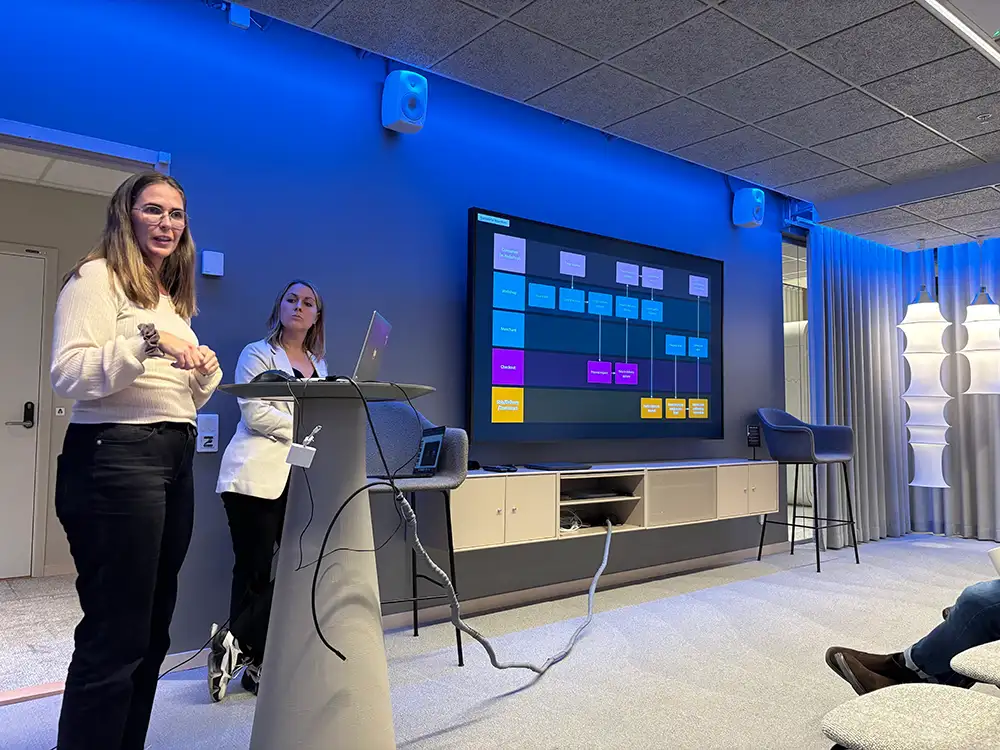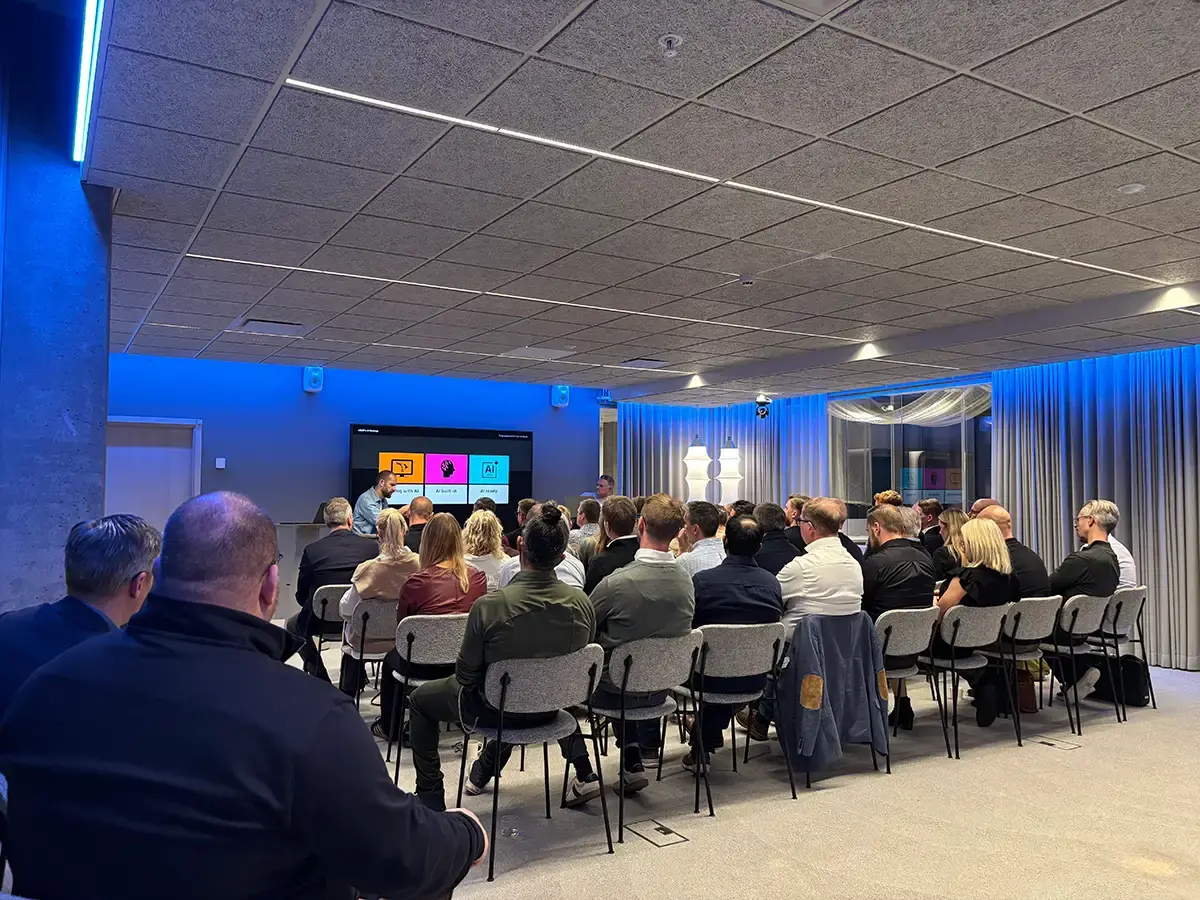
Last update: 16.07.2025
In this blog:
- What's hiding in your checkout?
- Reordering for revenue: the science behind nShift checkout experiments
- Why position is power
- The ROI of testing shipping options
- Practical tips for logistics leaders
- The big picture: small wins = massive compounding gains
- Further reading: Checkout opportunities FAQs
What's hiding in your checkout?
There’s a subtle flaw hiding in your checkout.
It’s not a bug. It’s not a broken feature.
It’s the order of your shipping options.
What customers see first, what’s pre-selected, and how choices are framed can quietly suppress conversions and leak revenue, without triggering a single alarm bell in your analytics dashboard.
And if you’re not testing it? You won’t even know what you’ve lost. Because it’s not just lost revenue, it’s revenue that was never allowed to exist. The kind that vanishes in the half-second between mild hesitation and silent abandonment.
In other words, it’s not that your checkout is broken. It’s that it’s unproven. And in e-commerce, assumptions cost more than mistakes, because at least mistakes get noticed.
In the first post of this series, we revealed how poor delivery UX can cost up to 30% of potential sales. In the second, we showed how modern teams are using no-code logic to control and optimize delivery flow.
If you haven’t read those yet, catch up here:
1. What if your checkout was quietly costing you 30% of sales?
2. The rule that changed everything: a modern logistics scenario.
Now comes the step many retailers miss: proof through experimentation.
Because while many set up delivery rules, few ever stop to ask: do they actually work? And even fewer tests them rigorously.
Most A/B tests? They never even finish, cut short, underpowered, or abandoned before insight emerges.
This is where real growth hides: not in more options, but in better decisions. And that begins with experimentation.
Reordering for revenue: the science behind nShift checkout experiments
Why should simply reordering a list matter so much? Behavioral science offers the answer.
Most e-commerce teams obsess over delivery speed, price, or tracking accuracy. But often, the real conversion killer isn’t cost or complexity - it’s choice anxiety.
Customers don’t want more options. They want the right ones in the right order.
That’s why forward-thinking retailers are now embedding experimentation directly into the checkout experience. With the nShift Checkout experiments feature, teams can test changes like:
- Reordering delivery options
- Highlighting defaults
- Labeling methods differently
- Segmenting users by geography or value
All without code and in real time. It’s not a configuration change. It’s a growth engine.
Why position is power
Behavioral science has a clear message: choices are never neutral. The way they're presented affects how we decide.
- Serial position effect: Items at the top of a list receive disproportionate attention
- Primacy effect: The first item seen is more likely to be remembered and chosen
- Decision fatigue: Too many similar options can paralyze rather than empower
Retail giants understand these biases. Amazon: at checkout, they pre-select Prime delivery for members, automatically setting the first option to Prime Shipping by default. In doing so, they “reduce friction” and “shorten the purchase journey”, essentially eliminating the mental effort of choosing among carriers. Thoughtful defaults create cognitive ease.
The same principle applies to shipping choices: if a merchant defaults to (or highlights) the option that best matches customer value or company goals, most shoppers will take it. A subtle reorder can act as a nudge – a gentle cue that guides the customer without restricting freedom.
You can apply the same principle to your own shipping flow. For instance:
- Default to the option that aligns with your profit strategy or sustainability goals
- Position free pickup first during peak season
- Highlight “Fastest” or “Best Value” visually
Subtle? Yes. A simple reorder becomes a behavioral nudge.
In other words, position is power. When a shopper sees an easily-understood default or the first option pre-selected, the choice becomes much simpler.
The broader lesson is that checkout is psychology. As behavioral economists Thaler and Sunstein teach, even trivial layout tweaks can tip decisions. For example, one study found people overwhelmingly pick free or cheaper options when given a prominent price anchor. In shipping tests, this might mean positioning low-cost delivery first to boost uptake, or foregrounding fast shipping to meet urgent needs. Recognizing these human patterns is why experimentation is so powerful: it forces us to test assumptions
The ROI of testing shipping options
Delivery options are the playlist for your checkout. Lead on the wrong track, and people skip the whole album. What you queue up for first shapes the entire customer experience.
The rise of delivery experimentation fits into a broader movement: checkout personalization.
With platforms like nShift, you can:
- Segment tests by cart size, location, or customer type
- Target variants (e.g., urban vs. rural shoppers)
- Adapt options based on time of day or product type
When done right, experimentation delivers real results. One study found that A/B tests reaching significance had an average +61% lift in conversion. That doesn’t mean every change multiplies orders by 1.6×; rather, it shows how powerful small UX wins can be when they hit customer preferences.
Crucially, even modest percentage gains compound into real money. If only 20% of experiments “win”, it pays to run many: this approach, common among tech leaders, builds a culture of continuous improvement. Logistics is now joining the ranks of marketing and product development in treating experiments as a core capability.
Consider some concrete, results-driven scenarios:
- Showing free pickup first during holidays → reduces abandonment
- Lowering free shipping threshold, but highlighting it visually → boosts order value (over half of US consumers now expect free shipping past a certain cart value)
- Targeting faster delivery for high-value carts → increases upsell rate
The point is data trumps opinion. Optimizing delivery options isn’t about shaving seconds or cents; it’s about crafting a decision that feels reassuring. That’s the hidden ROI: anxiety reduction at the edge of checkout.

Practical tips for logistics leaders
1. Hypothesize & isolate
Before changing anything, define your beliefs. What exactly do you think will improve? Example:
“We believe showing the fastest delivery option first will reduce cart abandonment by 10%.”
This clarity matters. Without a hypothesis, you’re just rearranging UI and hoping for the best. In practice, change only one variable per test, like the order of options, the default selection, or the label used (“Free Pickup” vs. “Click & Collect”).
With the nShift Checkout, that could mean simply duplicating your current configuration, adjusting the delivery order, and running your test live with no code change.
The takeaway: Isolating variables gives you clean results. Blended changes give you noise and no insight.
2. Split traffic wisely
Run an even 50/50 traffic split across your control and test groups. This ensures that the data from both cohorts is comparable.
Keep everything else constant: prices, labels, UX structure. If only one thing changes (e.g., option order), you can confidently link any performance change to that one tweak.
Use nShift Checkout traffic routing to control how visitors are bucketed and to automate test periods.
The takeaway: Contaminated or uneven traffic splits skew your results and waste learning opportunities. Clean design = clean insight.
3. Plan for statistical significance
Don’t stop too early.
About 80% of A/B tests fail to reach significance. Not because they don’t work, but because they’re abandoned too soon. Before you launch, estimate how much traffic you need (based on your baseline conversion rate and target improvement).
Let the test run its full course, even if early results look promising or flat.
The takeaway: Acting on partial data leads to false confidence. Significant doesn't just mean better - it means provably better.
4. Mind cognitive load
Behavioral science consistently shows that more choice = less action. If your checkout has too many shipping options, your customer may freeze instead of choosing.
Try experiments that:
- Reduce options
- Introduce a clear, helpful default
- Use labels like “Recommended” or “Fastest” to guide decision-making
This reduces mental effort, speeds up decision time, and increases conversion.
The takeaway: The brain is lazy. If you don’t simplify the decision, your shopper might decide to leave instead.
5. Segment where it matters
The same delivery layout won’t work for every customer. Urban shoppers may prefer pickup. Rural shoppers might demand home delivery. New users may default to “Standard,” while returning customers prefer speed.
nShift Checkout allows you to target experiments by cart value, country, language, and user type, so you’re not just testing, you’re learning for the right audience.
Examples:
- Test one setup for mobile vs. desktop
- Run different orders for first-time vs. repeat buyers
The takeaway: What works on average might fail in context. Segmented experiments help you find local maxima within your customer base.
6. Document, iterate & scale
Every experiment, win or lose, adds to your playbook. Track:
- What you tested
- What changed
- What the result was
- What you do next
Use wins as new baselines, and then test another variable: badges, pricing, estimated delivery dates, environmental icons, etc.
Build a testing archive across teams, so marketing, product, and logistics share learnings. This compounds insight and accelerates gains.
The takeaway: A single experiment might deliver a 2% uplift. But systematic experimentation can unlock transformational growth over time.
The big picture: small wins = massive compounding gains
Even a 1–2% lift in checkout conversion can translate into millions of euros annually for high-volume retailers. These tests aren’t UX niceties—they’re profit levers, grounded in psychology, surfaced through data.
With platforms like nShift, logistics leaders can now run experiments like marketers, fast, repeatable, and customer centric.
Test, don’t guess. Shipping options are no longer just an operational detail. They’re a psychological interface, a moment of truth between conversion and abandonment. Treat them accordingly.
nShift Checkout experiments make it easy to run controlled tests and fine-tune delivery UX without disrupting your store. It’s the same scientific discipline that drives marketing and product optimization, finally applied to logistics.
Reordering or tweaking delivery options may seem trivial. But when aligned with behavioral science and tested with data, it can unlock significant growth. In a competitive D2C market, these insights can separate market leaders from the rest.
Turn delivery choice into a conversion driver
The new nShift Checkout integrates flexible delivery into your ecommerce experience to lift conversion, reduce friction, and streamline fulfillment.
Learn more
Further reading: Checkout opportunities FAQs
What is the most common reason for cart abandonment during checkout?
The most common reason for cart abandonment is unexpected costs, especially high shipping fees or lack of delivery options. A complex or slow checkout process can also lead customers to abandon their purchase.
How can improving the checkout experience increase conversions?
A smoother, faster checkout reduces friction and builds trust. Offering clear delivery choices and minimizing steps can significantly increase conversion rates by meeting customer expectations.
What are the best practices for optimizing the checkout process?
Key best practices include offering guest checkout, minimizing form fields, ensuring mobile responsiveness, and providing multiple payment and delivery options. Clear delivery timelines also help reduce uncertainty.
Why is delivery choice important during checkout?
Customers want control over when and how their orders arrive. Offering delivery choices like home, pickup point, or express delivery helps meet diverse needs, reducing drop-offs and improving satisfaction.
How can flexible delivery options improve customer satisfaction?
Flexible delivery options accommodate different lifestyles and schedules. When customers can choose what works best for them, they’re more likely to complete purchases and remain loyal to the brand.
What is delivery experience management?
Delivery experience management is the practice of optimizing the entire post-purchase delivery process—from checkout options to tracking and communication—to enhance customer satisfaction and build trust.
How does the checkout process affect customer retention?
A smooth checkout with clear, reliable delivery options creates a positive buying experience. When customers trust your process, they’re more likely to return and become repeat buyers.
Can delivery transparency increase brand loyalty?
Yes. Transparent delivery details—like real-time tracking and estimated arrival times—build customer confidence. When expectations are met or exceeded, loyalty increases.
How can retailers offer more delivery choices without increasing complexity?
Retailers can use delivery management platforms to integrate multiple carriers and automate delivery preferences. This provides choice to customers while keeping operations efficient and scalable.
What tools help optimize the delivery experience in ecommerce?
Tools like delivery management software, order tracking platforms, and automated shipping solutions help streamline fulfillment and enhance the post-purchase experience.
Sources
- nShift Help center & documentation
Details on nShift Checkout Experiments, setup guides, and CSV export documentation.
https://helpcenter.nshift.com - ShipperHQ blog & research
Insights into e-commerce shipping strategies, customer expectations, and delivery personalization. https://blog.shipperhq.com/2024/07/delivering-personalized-ecommerce-shipping-experience - CXL: The psychology of defaults and choice architecture
Explains the primacy effect, choice overload, and behavioral nudges in digital UX.
https://cxl.com/blog/serial-position-effect/ - Shopify CRO guides
Research on how to reduce cognitive load at checkout and optimize for conversion.
https://www.shopify.com/blog/nudge-marketing - Medium – Amazon’s default shipping strategy
Behavioral breakdown of how Amazon uses default shipping options to influence decisions.
https://medium.com/psykkd/default-choices-an-amazon-case-study-be5fa8e63587 - Convert.com – A/B testing statistics and methodology
Data on average conversion lift, win rates, and common pitfalls in split testing.
https://www.convert.com/blog/a-b-testing/ab-testing-stats/#:~:text=8,%28Convert - ShipEdge – Consumer expectations around free shipping
Research showing over 50% of U.S. consumers expect free shipping based on cart thresholds.
https://www.shipedge.com/blog/shipping/reduce-cart-abandonment-shipping - Baymard institute – Cart abandonment statistics
Industry benchmark for average cart abandonment rates across e-commerce.
https://baymard.com/lists/cart-abandonment-rate - Standvast fulfillment insights – Impact of delivery speed on conversion
Analysis of how delivery options affect shopper behavior and conversion.
https://standvast.com/wp-content/uploads/2024/10/FINAL-Standvast-Playbook_10032024_web.pdf - Linnworks consumer delivery preferences study
Data showing consumer prioritization of delivery convenience and shipping speed.
https://www.linnworks.com/blog/ecommerce-delivery-conversion-rate - Medium – The paradox of choice in UX
A look into how excessive options can overwhelm users and hurt conversions.
https://medium.com/@abiyouakmal/less-is-more-in-user-experience-design-the-paradox-of-choice-82adff28e940

Author
Thomas Bailey
Product Innovation Lead, nShift
Thomas plays a key role in shaping how new features and platform improvements deliver real value to customers. With a background spanning product, tech, and go-to-market strategy, he brings a pragmatic view of what innovation looks like in practice and how to make delivery experiences work harder for your business.

About the author
Thomas Bailey
Thomas plays a key role in shaping how new features and platform improvements deliver real value to customers. With a background spanning product, tech, and go-to-market strategy, he brings a pragmatic view of what innovation looks like in practice and how to make delivery experiences work harder for your business.





